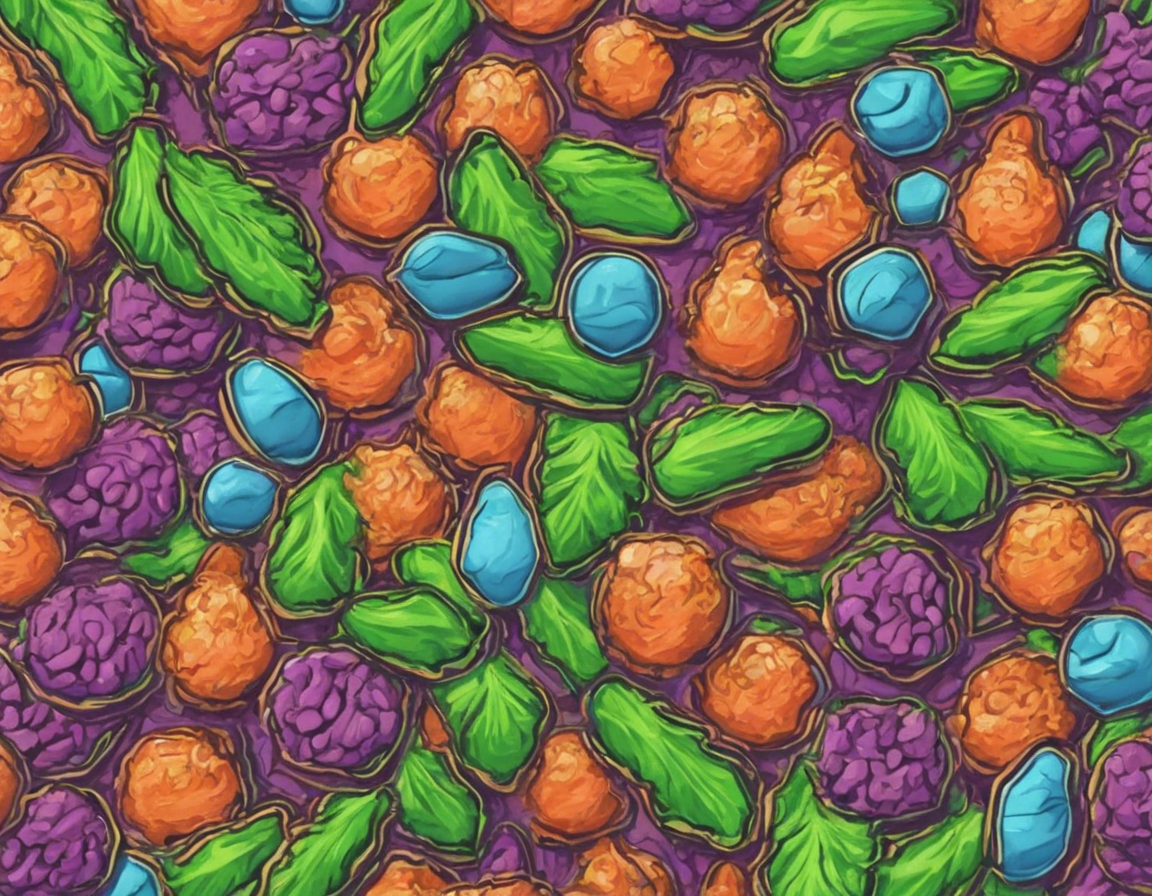Introduction
Sweet Tooth is a beloved and potent indica-dominant hybrid strain known for its sweet and fruity aroma, famously reminiscent of candy. A cross between three different strains, Sweet Tooth offers users a delightful mix of effects, making it a favorite among cannabis enthusiasts. In this comprehensive guide, we will delve into the history, genetics, effects, and potential benefits of the Sweet Tooth strain.
History and Genetics
Sweet Tooth was created by Barney’s Farm, a renowned Dutch seed bank, crossing Afghani, Nepalese, and Hawaiian landrace strains. This unique combination has resulted in a distinct flavor profile and potent effects that have garnered widespread popularity in the cannabis community.
Appearance
Sweet Tooth buds are typically dense and resinous, with a vibrant green hue and orange pistils weaving through the flowers. The glistening trichomes covering the buds give them a frosty appearance, indicating their high THC content.
Aroma and Flavor
One of the most notable characteristics of the Sweet Tooth strain is its sweet and fruity aroma, often described as candy-like or reminiscent of berries and tropical fruits. When consumed, users can expect a flavorful experience with hints of earthiness and spice that add complexity to the overall taste.
Effects
Sweet Tooth is renowned for its well-balanced effects that combine the best of both indica and sativa varieties. Users often report feeling euphoric, relaxed, and happy after consuming this strain. The initial cerebral stimulation gradually gives way to a sense of calm and physical relaxation, making Sweet Tooth an excellent choice for those seeking stress relief or help with anxiety and insomnia.
Medical Benefits
Beyond its recreational appeal, Sweet Tooth also offers a range of potential medical benefits. The strain’s relaxing properties may help alleviate chronic pain, muscle spasms, and inflammation. Additionally, the mood-boosting effects of Sweet Tooth could be beneficial for individuals dealing with depression or stress-related disorders.
Cultivation
Cultivating the Sweet Tooth strain requires moderate gardening skills and attention to detail. This plant thrives in a controlled indoor environment but can also be grown outdoors in a suitable Mediterranean climate. With a flowering time of approximately 8-9 weeks, growers can expect moderate to high yields of potent and flavorful buds.
FAQs
- Is Sweet Tooth a high-THC strain?
-
Yes, Sweet Tooth typically boasts a high THC content, making it a potent choice for experienced users.
-
What terpenes are prominent in Sweet Tooth?
-
Sweet Tooth is characterized by terpenes such as myrcene, caryophyllene, and limonene, contributing to its unique aroma and effects.
-
Are there any potential side effects of consuming Sweet Tooth?
-
As with any cannabis strain, individuals may experience side effects such as dry mouth, dry eyes, or increased appetite when consuming Sweet Tooth.
-
Can Sweet Tooth be used for daytime consumption?
-
While Sweet Tooth offers relaxing effects, some users find it suitable for daytime use, especially in smaller doses to avoid excessive sedation.
-
Is Sweet Tooth suitable for novice cannabis users?
-
Due to its potent effects, Sweet Tooth is recommended for those with some level of cannabis tolerance or experience.
-
How does Sweet Tooth compare to other indica strains?
- Sweet Tooth stands out for its unique flavor profile and balanced effects, distinguishing it from many traditional indica varieties.
Conclusion
Sweet Tooth continues to captivate cannabis enthusiasts with its delightful aroma, balanced effects, and potential therapeutic benefits. Whether enjoyed for recreation or relaxation, this indica-dominant hybrid offers a sweet escape into a world of euphoria and tranquility. As with any cannabis strain, individual experiences may vary, so it’s essential to start low and go slow when exploring the effects of Sweet Tooth.
